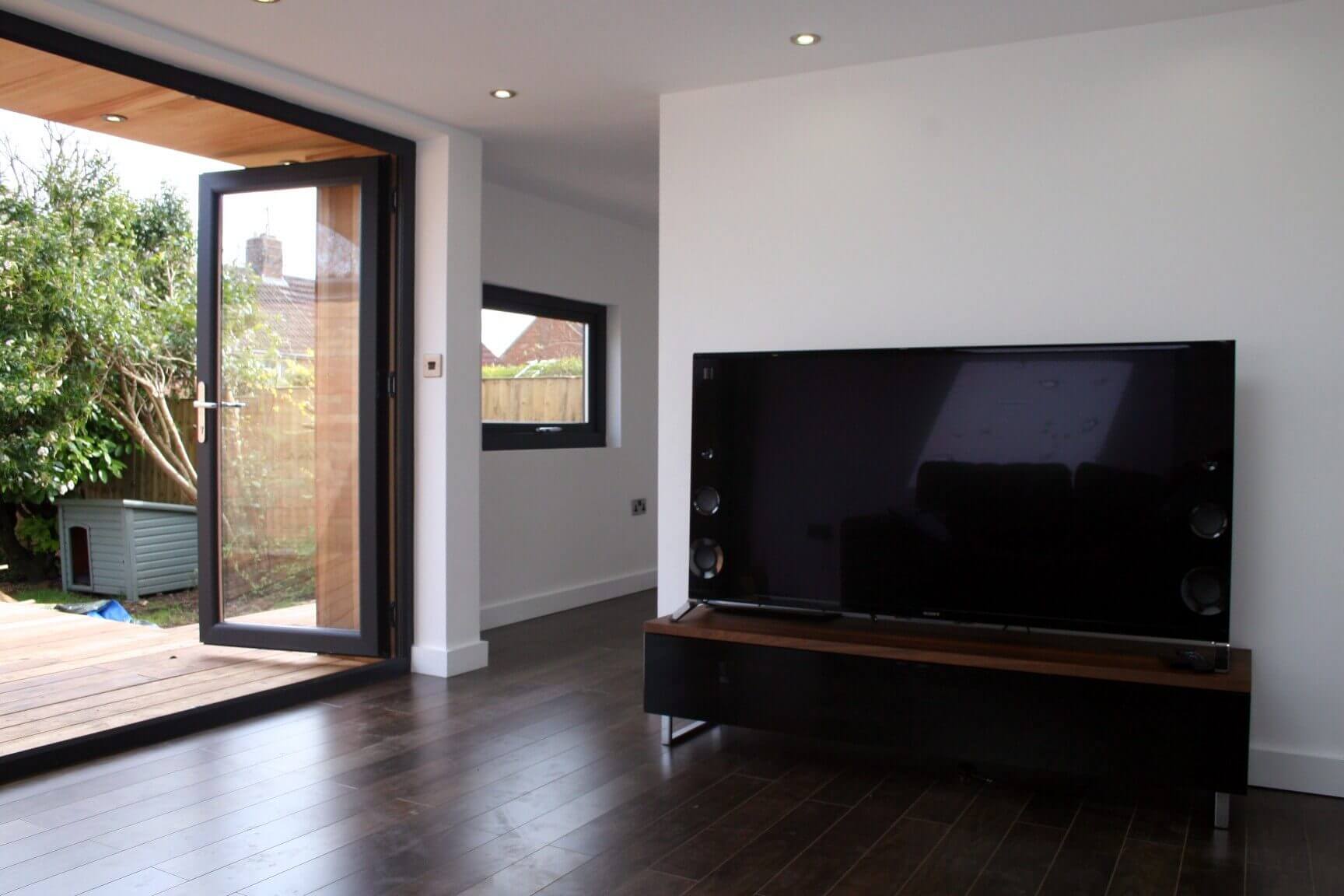Build Specification
Residential Specification Materials
All of our insulated garden rooms feature the same class-leading levels of thermal performance and structural strength. We achieve this through the use of modern residential materials, the sames as you would find in the build specification of a newly built home. This ensures a solid feel to your new garden room space and longevity for your investment.
A bit about the construction materials we use.
Behind every insulated garden room sits a foundation system, structural and insulative shell, EPDM roofing system and exterior breather membrane. You will be pleased to know that when specifying these critical areas, we choose the right materials for the right areas, providing strength, warmth, energy efficiency and longevity to your new garden space. The items below detail the key areas of your build specification.
FOUNDATION SYSTEM:
We have four foundation systems available to manage the different ground conditions that you may have. We can construct onto an existing level concrete base, uneven concrete surfaces and also onto lawn or soil areas using in most cases, our precast concrete plinth foundation system, or in some cases our concrete & steel pile system. The foundation system is chosen to meet your individual ground conditions and specified to manage the building loads.
FLOOR STRUCTURE:
All garden rooms utilise a treated timber, residential specification subfloor, with the same strength and feel you would expect from a newly built home. In most cases the floor structure will feature a best practice, underfloor ventilation gap and site-wide weed control fabric, preventing any future vegetation growth. The floor structure features 100 mm of polyurethane insulation (Kingspan type insulation) with an overall U-value of 0.19 W/m^2K, against the Part L build regulations requirement of 0.25 W/m^2K (Lower U values are better and more insulative).
SIP WALLS:
The walls are constructed from 120 mm Structural Insulated Panels (SIPs) known for their strength and thermal performance, they feature 100 mm of polyurethane insulation with an overall U-value of 0.18 W/m^2K, against the Part L build regulations requirement of 0.30 W/m^2K. The exterior of the walls are wrapped in a breathable and waterproof membrane, this allows any moisture to escape from the building but not to penetrate. The exterior is finished with your choice of high-quality cladding to provide the primary weather protection, with a best practice ventilation cavity behind.
WINDOWS & DOORS:
All of our windows and doors are A rated, argon filled, double glazed units and meet the current Part L building regulations requirements for thermal performance of glazing. All locking systems exceed the existing "secured by design" standards recommended by the UK police force.
INTERIOR:
The interior is finished with traditional plasterboard, skim and optional paint finish, lighting, recessed sockets and switches, with a choice of flooring types and skirting board. All of our garden rooms feature a heater to suit the size of the structure.
ROOF STRUCTURE:
The roof is an insulated and ventilated design finished with an EPDM roofing system, carrying a 20-year manufacturer’s guarantee as we are approved installers of this system. The roof is insulated with 120 mm of polyurethane insulation and is mono-pitched, meaning the roof has a front to rear fall for rainwater drainage. We follow the same designs standard for residential homes when specifying your roof structure for strength and best practice ventilation to handle any internal condensation. The roof has an overall U-value of 0.17 W/m^2K against the Part L building regulations requirement of 0.20 W/m^2K.
We maintain the same high quality build specification for all of our garden building installs.
More Information
DETAILS THAT MAKE OUR INSULATED GARDEN ROOMS CLASS LEADING
U-values
U values are how we measure and compare the insulation performance of materials. The U values are figures defined by laboratory tests carried out by the insulation manufacturers and then published. Knowing the U values of a range of insulation materials helps us to understand which materials will work best to keep our internal spaces warm in the winter and cooler in the summer. When it comes to garden rooms, knowing the U values of the insulation used and the overall u values of the floor, wall and roof constructions, which can be calculated, allows customers to compare different garden buildings to determine which will perform the best thermally.
Types of insulation
Insulation roll, insulation board, fiberglass insulation, Celotex, Kingspan! The topic of insulation materials and the types of insulation available, can sometimes leave a level of confusion, which material is best and what thickness do I need? If you have every wandered down the insulation aisle at b&q or wicks, glaring at the 4 x 8 sheets and shrink-wrapped rolls, you will know what I mean. Here we discuss the different types of insulation used by most garden room suppliers and the pros and cos of each. Remember, not all insulation is equal.
Energy efficiency
In most cases insulation type and thickness are key factors to consider when choosing a garden room supplier, as these factors contribute to the overall energy efficiency performance of the garden building. With many different material types, claims on energy efficiency performance and the possibly confusing world of u-values, we decided to return to one of our completed garden rooms, to find out how one of our previous builds performs in a real word environment.
Insulated garden rooms
There are many insulated garden rooms available on the market, but it is the type of insulation and the thickness of the insulation used that matters. As we offer class leading levels of thermal insulation, we can comfortably discuss and disclose our insulated building specifications. Knowing this will provide you with the confidence needed that you new garden room will be usable 365 days a year.





